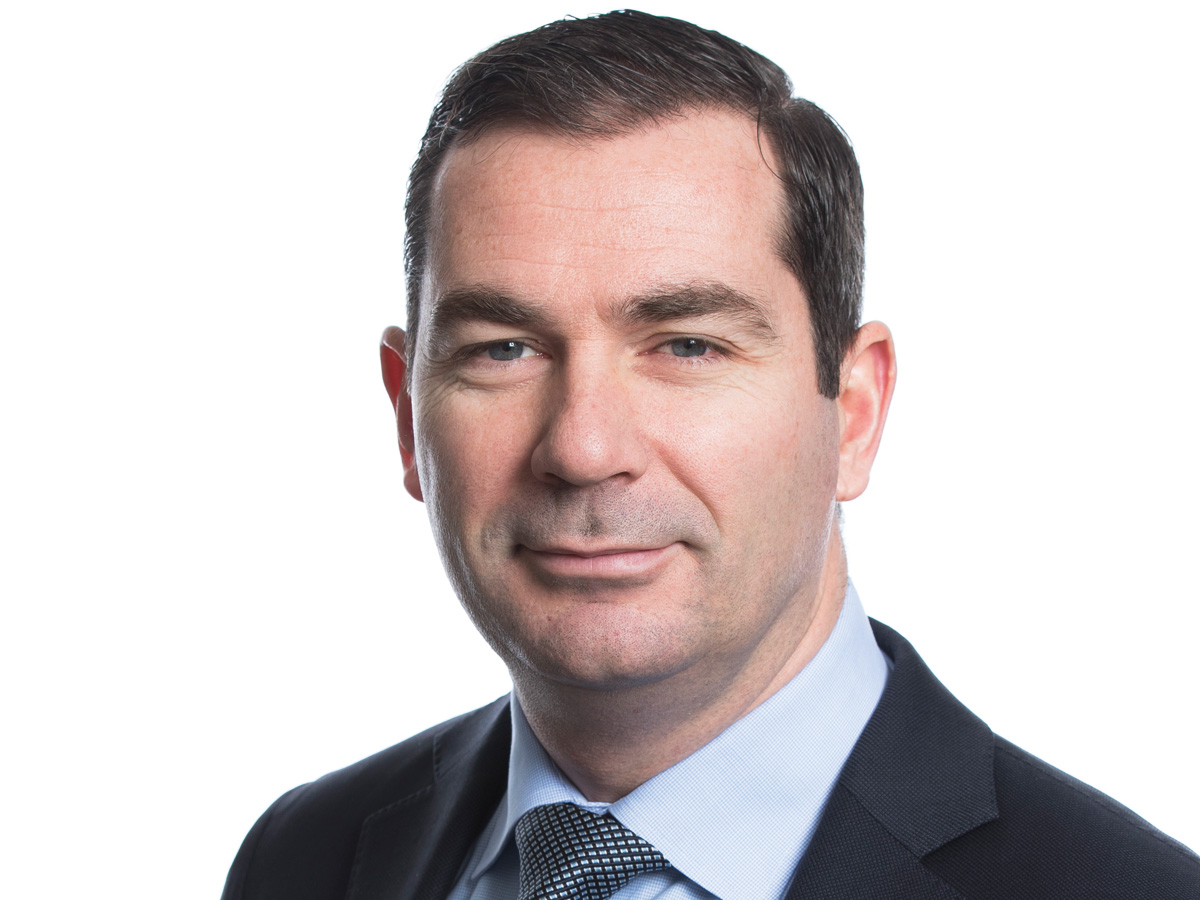We last spoke during the gilt crisis. Looking back, how well did you cope during that period?
We saw it as an opportunity, rather than a problem. Our LDI strategy worked as we expected, and given we have a very professional and experienced market-facing team with total control over the strategy, we were able to utilise all the tools at our disposal to manage the exposure and any associated collateral requirements. So, the gilt crisis didn’t cause us any issues at all. Our risk framework is well thought out and extremely robust.
On the opportunity side, we picked up an awful lot of corporate debt at the time. We bought about £1bn worth of short-term investment-grade credit. The market was stressed, so we used it as an opportunity to buy assets at attractive levels.
At the same time, we helped a lot of banks free up risk capital in order to continue to facilitate some pension funds getting liquidity.
So LDI helped rather than hindered the fund?
Because we didn’t have to worry about the fund, we could spend time looking for buying opportunities. Which we did.
What impact did the crisis have on your portfolio? You had about half of it in LDI.
Our balance sheet is split into two portfolios – a matching portfolio and a growth portfolio. The matching portfolio aims to replicate the interest rate and inflation risk of our liabilities using investment-grade debt: public and private, government bonds and swaps. That is roughly half of our assets.
It is not just a traditional LDI portfolio because it also has an allocation to investment-grade credit securities. There is a plan to fully fund this portfolio over the next 10 years, with annual injections from the growth portfolio, which holds the other 50% of our assets.
These are the riskier assets: equities, private equity, real estate, infrastructure and hedge funds – those kinds of assets. These are long-term investments that are expected to generate a higher return than the matching portfolio. This portfolio is intended to conservatively build reserves so we can absorb the impact of future changes in our balance sheet – claims, compensation changes, longevity, which may increase our liabilities.
Have you introduced any new assets into your portfolios?
We already have a broad investment universe to be fair. We invest in equities, private equity, infrastructure, farmland and agriculture, investment-grade credit, emerging-market debt, hedge funds and cash. So pretty much the length and breadth of the asset-class world. The only thing we don’t invest directly in is commodities.
And I stay away from what I would describe as non-fundamental investment propositions, such as crypto currencies, which do not trade on fundamentals.
We look at each investment proposition together with the thesis on returns. We must be able to estimate an expected return and understand how the asset can generate this return and buy into the proposition.
It is difficult to project an expected return on investments such as insurance-linked securities and crypto currency. Compare this to an infrastructure investment proposition, for example, where you
can analyse what is being constructed, model the future cashflows and understand where the returns/risks are coming from. So, we need to examine and understand the fundamental investment thesis before we can buy into it.
It doesn’t mean we have a narrow or restrictive investment range, it’s more the investment belief. We invest in hedge funds, for example, but the underlying assets they trade will be those that we are familiar with and are understood by us.
Going back to LDI, some critics say the crisis exposed such strategies, particularly those that were highly leveraged, and it has had its day as a result. What’s your view?
I don’t think that is true. LDI is a misused phrase. What has happened is that people have ended up classifying and categorising LDI in different ways. LDI in its simplest form is investing in assets to match your liabilities.
The problem in the LDI crisis was not the movement of the interest-rate market, the problem was the operational management of actual LDI programmes.
This needs to be robust. If you are investing in swaps as part of your LDI strategy then you should hold enough collateral such that if the underlining market moves by a certain number of basis points, you have enough eligible collateral to cover the margin call. Some didn’t. Part of the issue was that post-2008 many of these collateral arrangements changed, to be more restrictive.
I suspect the operational frameworks used by some asset managers have not evolved sufficiently to cope with the ramifications of these changes. People can point towards regulators or inappropriate LDI programs, but I believe it was the operational management of these programs and clunky – slow, inflexible, inefficient – governance which is predominately where the problem lay. These programmes hadn’t moved with the times.
Is that the biggest lesson you have taken from the crisis?
Yes. The key lesson is on operational management of these complex programmes. It was predominantly the small pension schemes that were hit, given they did not have the governance to react quickly.
So smaller pensions funds should not touch LDI?
Trustees have a responsibility to understand what they are buying, but consultants should have also understood what could go wrong and advised accordingly. It’s difficult to generalise.
There has been a parliamentary hearing and much finger pointing about that crisis. Where does the wider blame lie?
It is probably easy to comment on this in hindsight, but there were clear operational inefficiencies. If there is insufficient collateral on hand to be readily transferred, then governance between the pension funds themselves, consultants and the asset manager, needs to be much more agile and flexible – this is the benefit of having our own LDI programme run in-house. In the end, eligible collateral did not move quickly enough to pay margin calls.
Effective risk measurement and management is central to your portfolios. Why is this so important?
It is important to have a robust risk framework as this determines how we invest.
Our risk framework covers many types and layers of risks from balance sheet risk, asset class risk all the way through to liquidity risk – these are evaluated mathematically and intuitively. If the framework is created well, then we have the risk controls and processes to navigate through stressed situations.
Everything we do at the Pension Protection Fund is governed by risk management. Even when we review the strategic asset allocation, our process starts with the long-term expectations for risk, as well as return, for each asset class.
We also have other controls: compliance controls and risk controls, in terms of how much risk we can take on. The key point to make here is that conscious risk management is embedded throughout the entire investment process.
Has that been one of the successes of the fund overall?
Yeah, but there are a number of things that contribute to the success of the fund. One, there is the existing risk framework. Two, we have experienced investment professionals working within this framework throughout the fund.
Three, we also have different types of mandate.
Four, we then have a good level of diversification for the level of risk we take, so we do not have too much concentration on individual positions.
And five, my job is to make sure the fund is positioned for all market eventualities.
What is your approach to responsible investment and ESG?
ESG has been ingrained in our investment portfolio and investment process since even before I arrived [in 2013].
However, the bar for our ESG targets and objectives has moved higher and higher, year-on-year.
We regularly engage with our managers and have a fundamental exchange of views on how we expect our ESG criteria to be applied to our portfolios.
Our asset managers must abide by our ESG and responsible investment requirements, stewardship practices, which we are heavily involved in, and include engagement and voting activities, as well as exclusions and reporting. They must be comfortable with, and fulfill, all that.
We have not, though, set any big [net-zero] targets. Our approach is to move the bar higher and higher, over time, for our responsible investment criteria and ESG beliefs.
Targets are predicated on the investments you make and, importantly, are reliant on the government’s plans to become net zero. No one can definitively say we will be net-zero in five years. So, we look for evidence-based analysis and we take a risk-adjusted approach towards responsible investing.
Another key point to make is that ESG risk is mitigated through our responsible investment framework, which integrates ESG considerations and active stewardship. This includes conducting rigorous due diligence during the manager selection process and then ongoing monitoring of portfolios versus our ESG objectives.
Are there any political and economic issues and trends that concern you?
A lot of risks around the world at the moment are geopolitical and have been for some time. And much of the market is complacent about those geopolitical risks, so it is something to keep an eye on.
Looking at what is ahead, if you look at what is going on in the States, with Trump and Harris, there are two different views on the running of the economy, on protectionism and also on ESG and climate risk issues, which presents challenges.
The inflation conundrum is still there because of the geopolitics, because of the price of commodities and oil, which began with the war in Ukraine. Although it is not something we can do a great deal about. We just need to be cautious and suitably diversified in our investments.
Economically, we have effectively gone from one crisis to the next: the financial crisis of 2008 and then we had Covid.
So, we have not had a consistent economic picture. And I still believe there is some market rebalancing to be done. Geopolitics is likely to be a big driver of that.
How do you view the new government and its various initiatives?
Like the last government, there has been a lot of discussion around the growth of the economy and in relation to pensions, to get capital invested in the UK. Ultimately though it has to be investment in the right projects, for pension funds.
While it is true that prosperity is created by growth, the [government’s] push towards home-biased investment does not necessarily align with good portfolio diversification.
What has been the biggest lesson of your career?
When you are dealing with investments and markets you have to be calm, look at the facts, and make methodical decisions. If you are able to do that, you will come out of it well. You have to ignore the noise and focus on what is fundamental and in front of you to make logical decisions.
Having a solid framework to work within will help you make those logical decisions. You have to keep in mind that no one has ever bottled up a secret sauce where you can make money all the time.
BARRY KENNETH’S CV
June 2013 – present
Chief investment officer
The Pension Protection Fund
June 2004 – June 2013
Managing director
Morgan Stanley
October 1995 – March 2004
Director
Royal Bank of Scotland





Comments